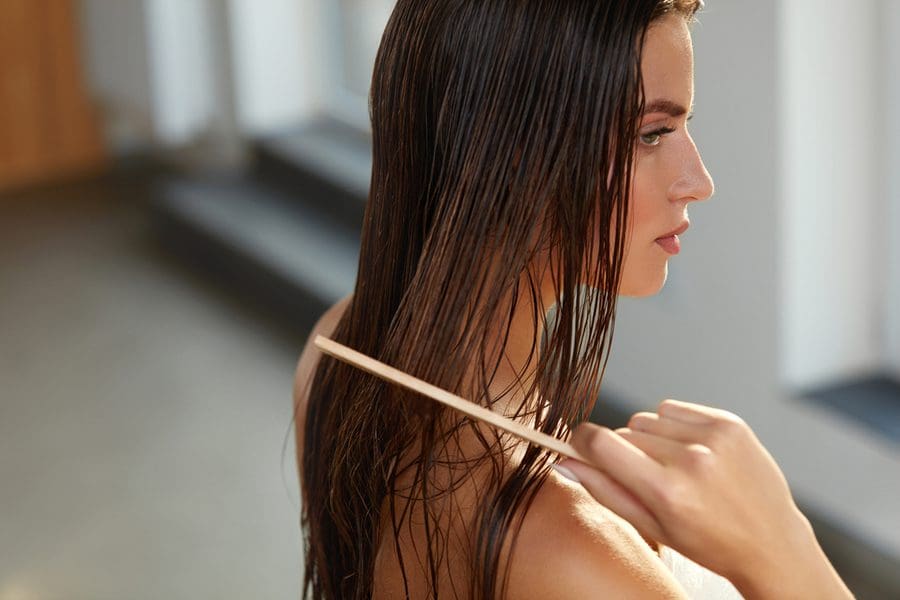Perhaps you hadn’t planned on adopting a hairstyle considerably longer than your usual choice. If your last visit to the salon was five or six months ago, you’ve probably grown increasingly aware that different techniques are needed to maintain your luscious locks. One of the most basic—brushing—would seem a no-brainer, but mistakes can inflict damage such as tangles and breakage. The art of detangling longer hair starts before you step into the shower, and there’s a difference between brushing hair wet vs dry. Here are a few tools and techniques that will help you keep longer hair luscious, shiny, and tangle-free.
Conditioning comes first
Hair needs extra protection when it’s wet because that’s when strands are most fragile and prone to breakage. Leave in some conditioner after shampooing instead of completely rinsing it out to help detangle your hair.
Curly hair is more prone to tricky knots and matting, which can can make it more difficult to detangle. If you have textured hair, try applying conditioner to dry hair a few minutes before hopping in the shower. A little extra time goes a long way to help soften curls and tangles.
Don’t rely on your conditioner alone. Remember to pre-detangle before your shower with your fingers. If using your fingers alone is too difficult, try a wide-tooth comb as a last resort, starting at the ends.
Select the right comb
Combs are designed to detangle hair, but choosing the right comb makes a difference. A fine-tooth comb or a comb with staggered teeth is gentler on hair than a wide-tooth comb. Wider teeth have more surface area per piece of comb, and can break hair and lock in knots instead of detangling.
Follow up with the right brush
The best bet for detangling hair is a gentle option such as a synthetic vegan boar bristle brush (click here) that removes knots without tearing out hair. (We also love their sustainable bamboo brush handle and tree-free paper packaging)! Avoid brushes with little balls at the end of each bristle. Your hair may wrap around these pieces and get ripped out. Round and metal brushes that are designed for blow drying hair can break your hair if you use them to work out tangles.
Start at the ends, not the roots
Brushing from the roots to ends on dry hair is a mistake that creates more knots and damages hair unnecessarily.
Instead, start by brushing just a few inches from the ends. Only when you’ve worked out all the tangles in the lower section should you move higher and closer to your scalp.







